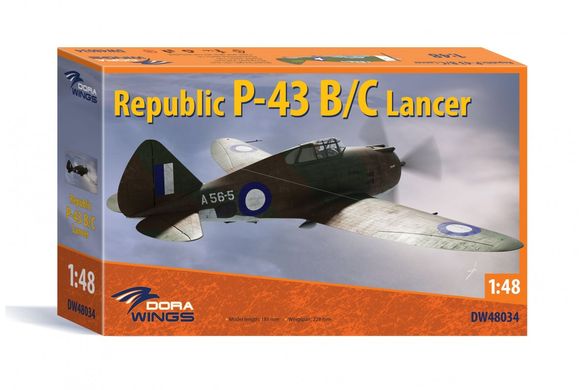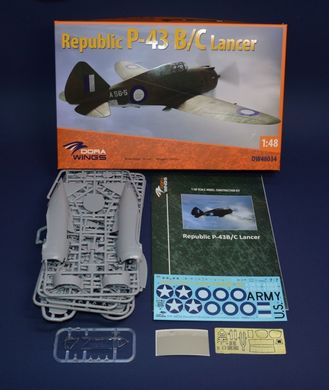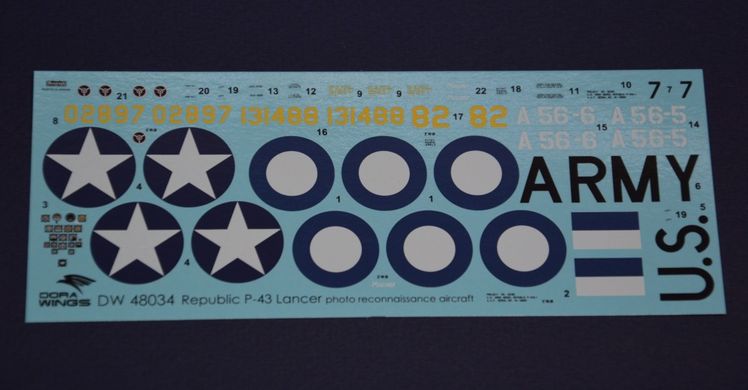The Republic P-43 Lancer was an American low-flying fighter that flew in 1940, and during its production (which lasted from 1940-1941) about 270 machines of this type were created. The plane in the R-43A version was 8.7 meters long with a wingspan of 11 meters. The drive was provided by a single Pratt and Whitney R-1830 engine with a maximum power of 1200 hp. The maximum speed was 573 km/h, the height gain was 13 m/s. On-board armament consisted of 4 12.7 mm M2 Browning machine guns. The Republic P-43 Lancer was developed for the United States Air Force, then known as the United States Army Corps (USAAC), as the new primary interceptor. It withstood the competition of prototypes, for example: P-38 Lightning or P-40 Warhawk. It is interesting that he did not come out of this battle completely defeated, because the US Air Force placed an order for the short-series production of this machine. It is interesting that, despite good flight and piloting properties and the ability to fly at high altitudes, the machine was quickly recognized as unfit for combat and was sent to the reserve or converted into photo-reconnaissance aircraft, as well as exported to China and Australia. However, there is still controversy as to whether the Republic P-43 Lancer was too hastily rejected by the USAAC. The main version of the machine development was the P-43A model, which compared to the P-43 model had better armor in the cockpit, self-sealing fuel tanks and another version of the Pratt and Whitney R-1830 engine. This was also the version with over 100 copies transferred to China.



















